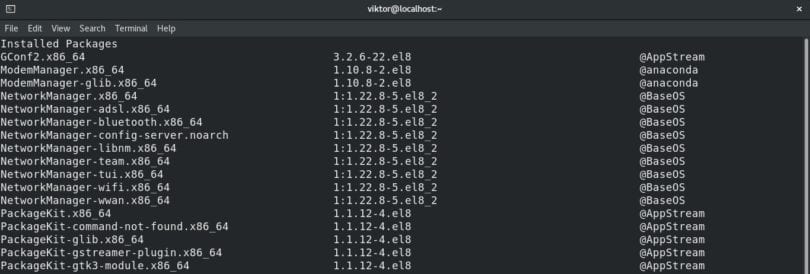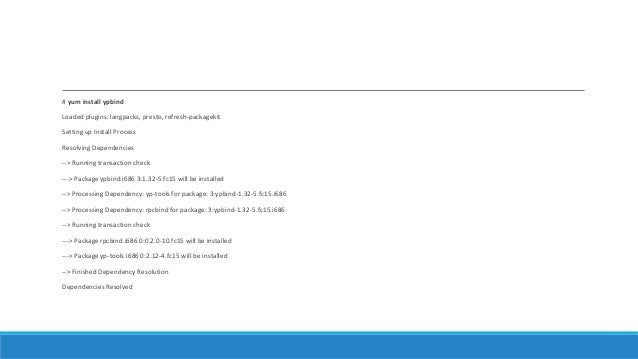

To search for a specific package that might be installed you run the command without the -a option and provide the package name you would like to search for. So in order to list all the installed packages you use the following command: $ rpm -qa The -q option is used to query the installed packages, the -a option tells rpm to query all packages. To list all installed packages you use the options -q and -a. The rpm package manager is more a low-level tool for managing packages, but for listing installed packages it is just as useful.

RPM is currently short for RPM Package Manager and at first as Red Hat Package Manager. RPM is both a package manager as well as a file format for RPM packages. If you can use yum you probably have access to the rpm command as well. To search for a specific package in your installed packages, this is useful if you need to check whether a certain package is actually installed on your system, you may pipe ( |) the output to the grep command.įor example, the following commands will list the installed packages of which the name contains the substring “python”: $ yum list installed | grep "python" $ yum list installed | lessĬheck if a certain package is installed with yum Since the output of the command is probably quite long you may prefer to use a terminal text viewer like less or view. You might need to prefix the command with sudo depending on how the permissions are set up on your system. To see which packages are installed on your system you can use the yum list command, see the following example: $ yum list installed

No coincidence there since these three Linux distributions are closely related to each other.īesides just installing, updating and removing packages on your system yum conveniently provides a command to see which packages are currently installed as well. The yum package manager is the package manager of choice to install RPM packages on CentOS, Red Hat and Amazon Linux. List installed packages with `yum` on CentOS


 0 kommentar(er)
0 kommentar(er)
